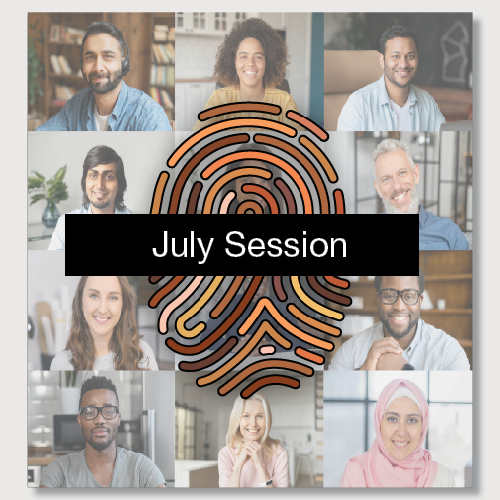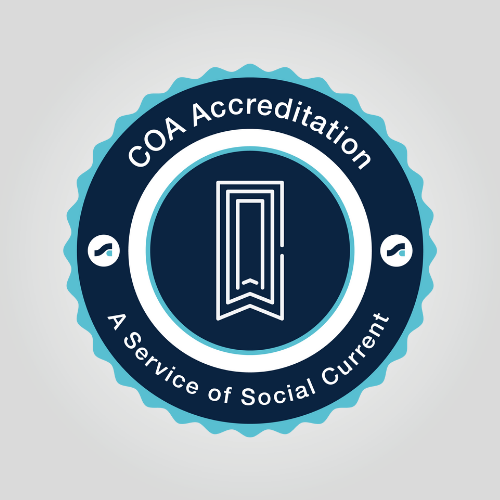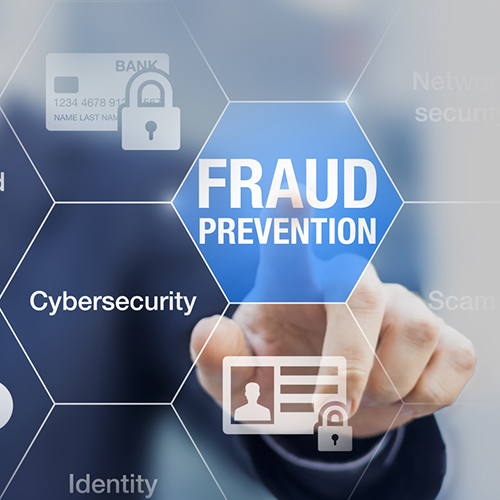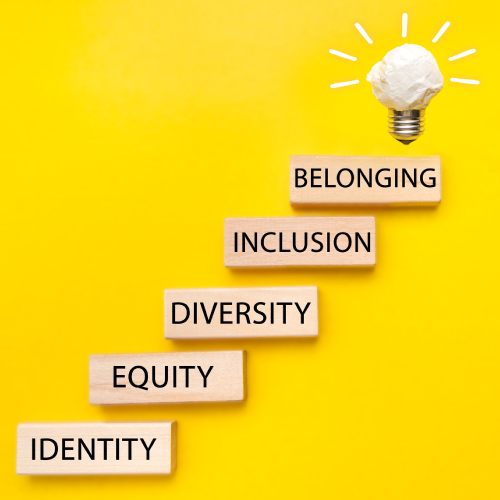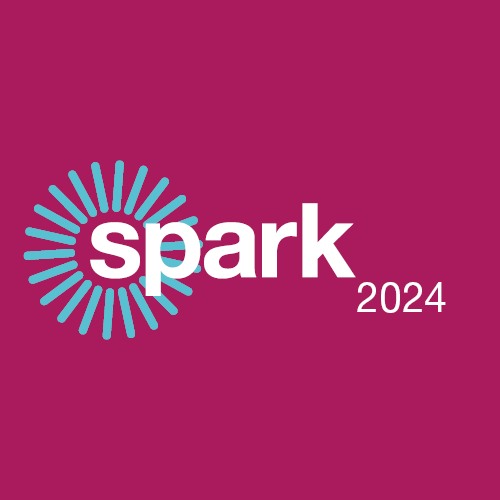Solutions
Knowledge and Insights Center
Social Current’s Knowledge and Insights Center equips social sector professionals with the research and resources they need to stay current on emerging trends, implement practices, and advance organizational excellence.
The Knowledge and Insights Center specializes in reviewing and evaluating information sources for credibility and thoroughness and systematizing the information in a way that professionals can quickly and easily understand.
Through the Social Current Hub users can access the Knowledge and Insights Center that includes both self-service and personalized support offerings.
- Resource Library
- Topical Databases
- Ask-a-Librarian
Resource Library
Curated by professional librarians, this extensive clearinghouse library contains thousands of catalog records in more than 20 topic collections.
- Topic Collections. Collections are curated by subject matter experts and focus on topics that advance the Social Current network’s priorities in practice and policy.
- Special Content. The catalog also includes issue briefs, literature reviews, and other materials created by subject matter experts and librarians to summarize and simplify topics.
Research, Business, and Media Databases
Thousands of journals, business book summaries, news sources, and other publications are accessible via premium content platforms.
- EBSCOhost Service. This service offers access to multiple databases, each with a distinct focus and source coverage, such as business and industry, social sciences, nursing and allied health, and education.
- Social Work Research and Practice. Families in Society: The Journal of Contemporary Social Services is the official journal of Social Current. It offers peer-reviewed content published since 1920 that continually advances the social work profession.
Ask-a-Librarian
For personalized information needs, organization leaders and their teams can work with librarians on a variety of reference requests, such as literature searches, sample admin. policies/procedures, and trends compilations. Librarians employ an evidence-first approach to scan and evaluate the knowledge base for requested topics, always assessing their scope, relevance, and utility.
Testimonials
Request More Information
March 1, 2022 @ 7:00 am – 11:00 am
- Workshop: $650
- Intercultural Development Inventory® (IDI®): $288
Workshop Sessions
March Session: March 1, 8, 15
June Session: June 9, 16, 23
November Session: Nov. 1, 8, 15
Given the continued emergence of an interconnected society, an ever-evolving pandemic, calls for racial and social justice, and heightened polarization across many fronts, building organizational capacity for advancing equity, diversity, and inclusion is more critical than ever. The need for leaders across sectors, and especially within the social sector, to understand and engage the current environment is essential in building an equitable society for all.
This journey begins by ensuring all people feel valued at work. It mandates the co-creation of an inclusive workforce that can foster the development of a healthy, productive, and peaceful society in which all people can participate and reach their full potential. The journey continues with building a culture that supports equity for long-term sustainable change and engaging the inequitable systems, which marginalizes, disconnects, and dismisses individuals from having access and full participation in reaching economic mobility and prosperity.
During this three-part virtual workshop presented by Social Current, participants will explore their relationships with equity, diversity, and inclusion (EDI) in a safe environment and make progress on developing an EDI action plan for their organizations.
Because advancing EDI requires more than just basic knowledge and the will to improve, presenters will help participants understand their own biases and the role of historical discrimination, non-inclusive behavioral actions, and culture in creating an unjust society.
The workshop will include presentations of valuable information, facilitated discussions, reflection opportunities, and dedicated planning time. In addition to learning about core concepts, participants will put ideas into action with facilitated planning time. Everyone will begin developing action plans for their organizations or build on existing plans. Organizations are encouraged to send multiple employees to build or work on current EDI plans for advancement.
About the Intercultural Development Inventory® (IDI®)
To be equipped to advance equity within your community, organization, and beyond, it is essential to also understand and advance your personal journey. Enhance your participation in this workshop with the Intercultural Development Inventory® (IDI®), which provides valuable and actionable information about your own mindset/skillset toward cultural difference and commonality. The IDI®, a 50-item online questionnaire, has been developed and tested using rigorous cross-culturally validated psychometric protocols with over 220,000 respondents from a wide range of cultural groups and countries.
Add this assessment to your workshop registration to receive practical and in-depth information. Individuals will receive a customized IDI® Individual Profile Report and participate in a 60-minute one-on-one debrief session with Social Current Director of Evaluation and Research Phyllis Richards to discuss their results and develop a plan to meet their personal intercultural development goals. Richards is a qualified administrator of the IDI® and has more than a decade of experience in working collaboratively to address systemic racism and improve cultural competency.
Workshop Goals
- How EDI has changed over time within the U.S. as a result of legislation
- Understand the skills needed to advance your EDI personal journey
- How biases, racism, and incivility are barriers to building an EDI-enriched workplace culture
- Understand their organization’s phase of EDI maturity, and how to move to the next phase
- A multi-faceted approach for co-creating an organizational culture that fosters EDI
- Options for addressing critical current issues
- How to structure an organizational plan to advance EDI using results-based strategies
- Create the skeleton plan with facilitator support
Who Should Participate
- Staff responsible for diversity, equity, and inclusion
- Human resources professionals
- Organizational development professionals
- Executives
- Board members
- Executive search firms
Presenters
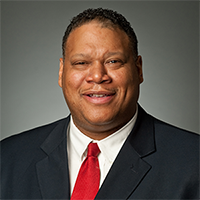
Undraye Howard, PhD
Senior Director and Special Advisor to the CEO for Equity, Diversity, Inclusion and Engagement
Social Current
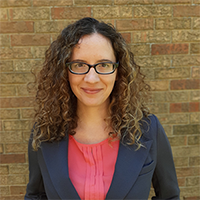
Jerica Broeckling, M.A.
Engagement Partner
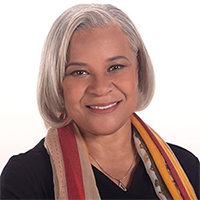
Sheryl White, PhD
Vice President of Training and Organizational Development
Neighborhood House Association
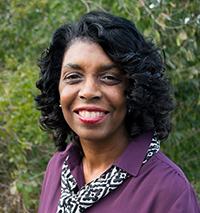
Phyllis Richards, M.A., M.S.
Director of Equity, Diversity, Inclusion and Research
Social Current
Related Events
April 2 @ 2:00 pm – 3:00 pm
Abuse allegations are on the rise for public human service agencies and community-based organizations due to reviver legislation across the country. Settlements are staggering. The damage to an organization’s reputation can be irreparable. Many insurers and reinsurers are beginning to withdrawal from the abuse insurance market completely, while others are taking a closer look at their insureds’ abuse prevention methods.
This presentation will provide a comprehensive overview of the abuse market conditions and what to expect at the next renewal. Social Current’s Strategic Industry Partner Brown & Brown Insurance will share the knowledge needed to avoid a non-renewal situation by walking participants through the required abuse prevention program elements.
Takeaways
- Reviver legislation, nuclear verdicts, sympathetic juries, and the rising number of abuse allegations are driving carriers to legislate their own changes in the form of non-renewals, premium or retention increases, and reduced limits.
- Before carriers extend abuse coverage to organizations, they want to know the organization has taken appropriate actions to protect their vulnerable population.
- Most carriers request information about an organization’s written abuse prevention procedures, screening and selection process, training, and reporting procedures.
- Abuse is preventable. Organizations should audit their current abuse prevention program to ensure it contains all the required elements.
Who Should Participate
- CEOs, Executive Directors, COOs, and CFOs at agencies and organizations serving children, vulnerable adults, or seniors (children’s homes, addiction treatment/recovery centers, behavioral counseling clinics, senior or assisted living, residential group homes, camps, religious institutions, schools, day care centers, after school care programs, YMCA/YWCA, etc.).
Presenter
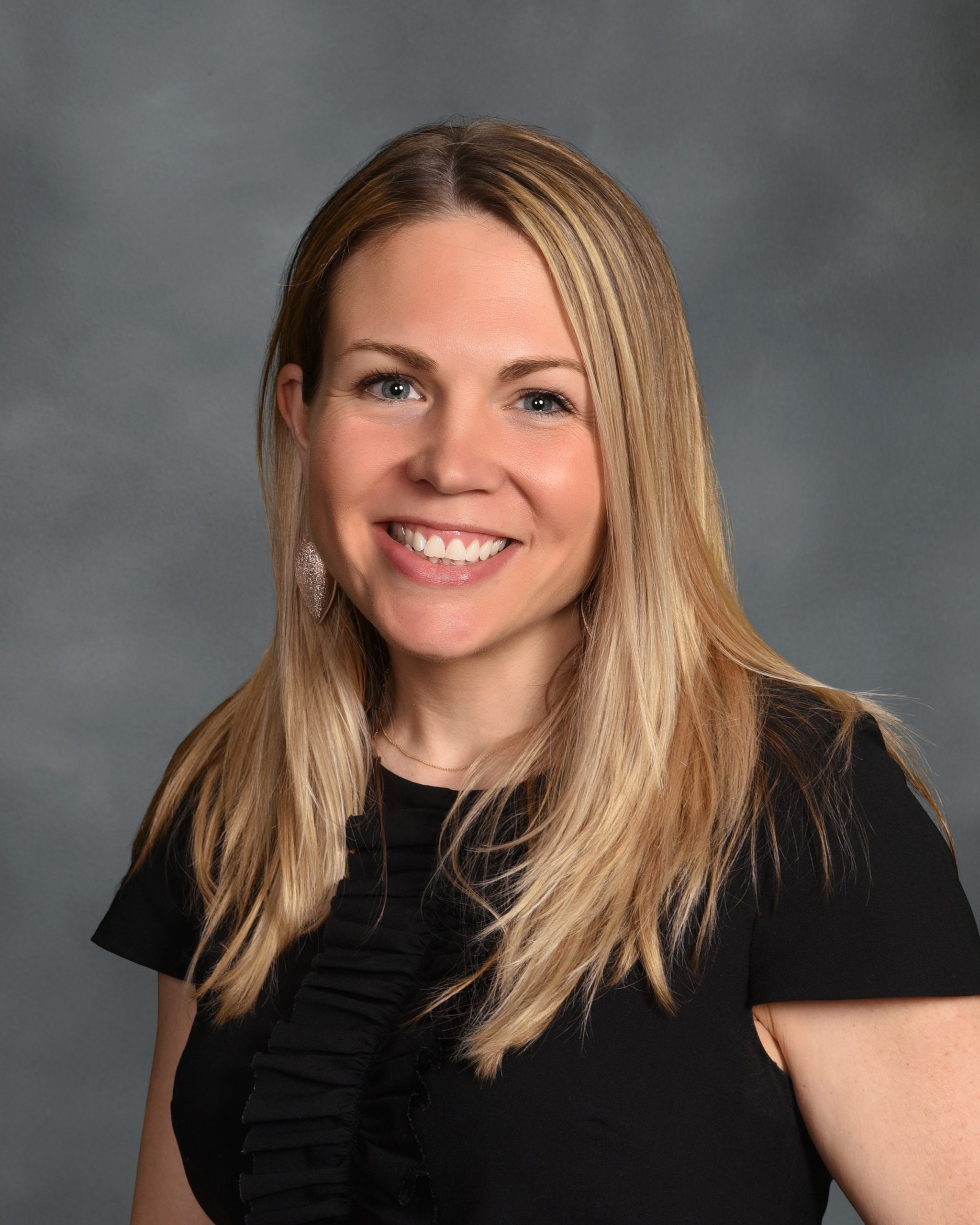
Tiffany Vrabel, MBA, CIC, ARM
Senior Vice President
Brown & Brown
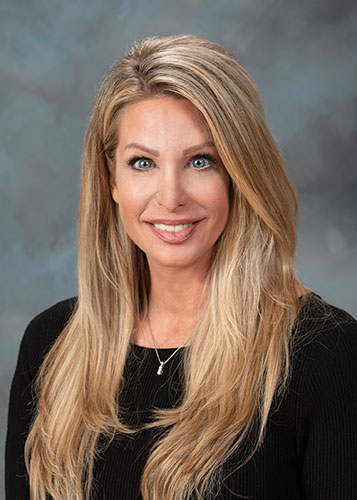
Lisa A. Bellis, MBA, ARM, CSM, CPG, AIS, CIC, CRIS
Senior Vice President, Risk Management & Loss Control
Brown & Brown
Related Events
It is comforting to believe we know ourselves, our community, the universe, and our place in it. How else could we get out of bed every morning? That said, we must admit that much of our knowledge is inherited or built on an imperfect (and sometimes dangerous) foundation of experience and a priori reasoning.
a priori (a pri-o-ri): relating to or denoting reasoning or knowledge that proceeds from theoretical deduction rather than from observation or experience.
This is what excites me about data. Can we call it salvation? When collected and analyzed properly, data removes our subjectivity and can offer a neutral, reliable view of the world – if only a miniscule slice of it. Data is the heart of COA’s performance and quality improvement standards, and drives human service providers to continually monitor performance and investigate flagging or abnormal measures. Being deep in the data revolution, we now have unprecedented access to data about the world outside of ourselves and our organizations – critical for human service providers who have a special mandate to know and respond to the communities they serve.
The following are some of my favorite sources of public data relevant to human service providers. May you find refuge and transformation within them!
Data USA
The U.S. government collects lots of data. Lots of it. And most of it is publicly available – though likely raw, disorganized, and inaccessible to anyone without the skills to process it. Data USA connects to these sources of government data and makes them consumable by all:
- Natural-language generation translates data into plain, simple statements; each page feels authored by a human hand.
- Beautiful visualizations show trends over time or communicate complex datasets.
There’s a whole lot here, too: data on universities, colleges, and education opportunities; demographic data on cities, counties, ZIP codes, and states; job and employment data; medical and healthcare data; and more. Enter in your city’s name and see what happens. But Data USA does something remarkable by using its data to create local, state, or national benchmarks. For example, its natural-language generation algorithm produces this statement about Polish speakers in Chicago, IL:
When compared to other census places, Chicago, IL has a relatively high number of residents that are native Polish speakers. In 2015, there were 49,464 native Polish speakers living in Chicago, IL, approximately 9.4 times more than would be expected based on the language’s frequency in the U.S. more broadly.
Honestly, there is so much here. I recommend setting aside 30 minutes to deeply explore this unbelievable service.
How can human service providers use this data?
Research the demographic profile of your city, state, or ZIP code to ensure your client engagement practices are culturally nuanced. Are your materials translated into all local languages? Is there an area of the city more likely occupied by your target clients and so more deserving of time and resources?
Compare your client demographic data to the demographics of your service area. Is it possible that one or more groups are missing out on your services?
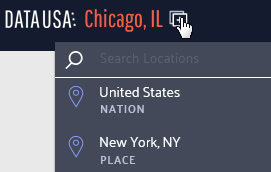
Use the compare function to analyze the differences between your service communities; to compare locations, click the icon shown below and select another location for comparison.
Individuals seeking services have often been fighting a long, lonely battle. Bolster your intake process by sharing relevant community data with service recipients to contextualize and destigmatize their experience. For example, a substance use treatment program could use the Excessive Drinking Prevalence measure found in the Risky/Harmful Behaviors section when serving individuals struggling with alcohol dependency.
Learn about basic measures of health and safety such as insurance coverage, medicare enrollment, and prevalent health conditions via the Health & Safety section of each location page.
Discover broader economic trends like this chloropleth on the poverty rate by county across the nation.
Nonprofit Finance Fund’s State of the Sector Survey
Since 2009, the Nonprofit Finance Fund (NFF) has run the State of the Sector survey to engage nonprofit organizations across the nation about their financial security and beyond: challenges facing their organization and their clients, opportunities they see in the next year, their use of program metrics and outcomes data, and more.
The 2018 survey results were affirming and surprising in equal measure. I’m not surprised that offering competitive pay is a top challenge reported by respondents, but that 67% felt the U.S. government made their clients’ lives harder? That’s shocking.
Want more? Tiffany Langston, Associate Director of Knowledge & Communications at NFF, provided a wonderful synopsis of the report, its function, and their findings in Data for Change: Nonprofit Leaders Raise Their Voices about the State of the Sector.
How can human service providers use this data?
Benchmarks are woefully scarce in the nonprofit/human service sector. Compare your organization’s performance to other nonprofits using many of the financial health measures found throughout the report. And, use the filters at the top to narrow the results to organizations like yours.
Start a conversation by reviewing the survey data with your team as either an element of your annual/strategic planning or simply as a team building exercise. Pause and reflect on each relevant question: what is the state of your organization and how could this impact your ability to deliver quality services? Do the findings reflect your neck of the woods? Why or why not?
Have an honest conversation about your organization’s theory of change, logic model, or outputs and outcomes measures. Are you, like 41% of respondents, operating without a theory of change or logic model? Do you, like 21% of respondents, not collect outcomes measures? How will this impact your ability to win grants in the future?
Leverage this data in conversations with policy makers and funders. Does your organization, like 60% of relevant respondents, receive late payments from your state? How does this inhibit or complicate your operations?
United States Census Bureau
The majority of the data output from the Census Bureau is aimed at researchers and other government entities and often not presented in an easily-consumable form. I recommend joining the Census Bureau’s mailing list for regular updates on gems like The Opportunity Atlas. This interactive map shows “the average outcomes (e.g., earnings) of children who grew up in each neighborhood in America, by demographic subgroup (race, gender, and parental income).”
Their Infographics & Visualizations page also has several interesting offers.
How can human service providers use this data?
Basic data on the communities served by human service organizations often reaffirm what front-line staff already know. But, being able to communicate these characteristics using hard data from respected institutions like the Census Bureau can bolster grant proposals, marketing collateral, and appeals to donors.
Forms 990 Data
How could we not talk about that shining ray of transparency, the Form 990? Let’s go beyond GuideStar and look at some fascinating services utilizing and transforming this data into information.
Citizen Audit
Citizen Audit makes the Form 990 look good. Traditional Form 990 data is accessible within a modern search interface and without learning what each schedule means (that’s 2 hours of my life I’ll never get back).
open990
Another beautiful interface for exploring Form 990 data. The layout is a bit simpler than Citizen Audit and shows a year by year comparison of all relevant data points by default.
ProPublica’s Nonprofit Explorer
Though less feature-rich than the services above, ProPublica’s Nonprofit Explorer provides quick and easy access to the text or raw XML versions of an organization’s Form 990 – great if you’re hunting for something in particular and want to execute a single page find across all data.
IRS Master Business File
For you pros out there, the IRS provides a download of all tax-exempt entities. These worksheets, divided into geographic regions (you can also download state-specific versions), contains the most recent Form 990 data on all tax-exempt entities.
How can human service providers use this data?
Benchmarks, benchmarks, benchmarks. Surely you are benchmarking your organization’s financial health against your past performance, but what about your peers? Dig up data on local organizations providing similar services and see how you compare.
Ask questions like:
- How are our financial ratios compared to our competitors?
- How does our CEO’s wage compare to other nonprofits like ours?
- We have 35 board members. Is that normal?
Find other organizations across the country providing similar services (for benchmarking or collaboration) using the NTEE code. The IRS categorizes all tax-exempt entities using this code; it’s a three character code where the first character, a letter, indicates the broad service area while 2 following digits reflect a narrower categorization of services. Find your NTEE code (most human service organizations have a P or F as the leading character), then find others with that same code and a similar revenue size. Use the resources above to dig into their 990 data.
Learn the ins and outs of your own organization – the 990 is typically comprehensive and is always a rewarding read. You might be surprised about what you discover!
Have you utilized any helpful data resources? If so, feel free to share them with us in the comments section!
These recommendations herein are those of the author; they do not constitute a formal endorsement by the Council on Accreditation.
The public policy team is pleased to host the session, Social Current’s Federal Policy Agenda: Advocacy Workshop and Opportunities for Impact, Sept. 12 in Baltimore, leading up to SPARK 2022, Sept. 13-14. Blair Kiser, senior director of government affairs, and Derry Kiernan, field mobilization and policy manager, will highlight the critical role of the social sector in federal policy development and engage participants with advocacy skills workshops. The session will feature background on the mechanics of the federal government, in-depth exploration of critical issues, and training on messaging and advocacy strategy.
This interactive pre-conference session will include an overview of Social Current’s first-ever federal public policy agenda, a crash course in U.S. public policy, and a sneak peek at the 2022 midterm election and 2024 general election. The session will conclude with a policy briefing covering the recent opioid settlement funds, what programs and services they can support, and how to advocate for them. This briefing will be followed by a congressional meeting simulation, where participants will prepare for a meeting with members of their congressional delegation to advocate on issues vital to the continued health and growth of the social sector.
We are excited to host this session and hope to see you there! There is still time to register for SPARK 2022 and this free pre-conference session.
Administration Releases Student Loan Forgiveness Plan
On Aug. 24, President Joe Biden announced his student loan forgiveness plan, eliminating up to $20,000 in debt for borrowers who earned less than $125,000 in 2020 or 2021 ($250,000 for married couples). Individuals who received Pell Grants, which help low-income students afford college, will have $20,000 forgiven, while people with standard federal loans will have $10,000. All “Direct Loans,” the most common type of federal loan, issued before June 30, 2022, are eligible, including those taken out by parents and graduate students. It is estimated that this plan will eliminate student debt for 20 million people out of 43 million with student loans. The Department of Education says that monthly payments will decrease by $250 for borrowers with a remaining balance on a 10-year payment plan. The administration’s plan also included a proposal to reduce the cap on monthly payments for undergraduate loans from 5% to 10% and to eliminate balances after 10 years of payments, rather than 20. The administration also announced that loan payments paused during the pandemic will resume in January 2023. A study by the Committee for a Responsible Federal Budget, which did not include the additional forgiveness for Pell Grant recipients, projects that the plan will cost $230 billion.
Senate Committee on Aging Holds Hearing on ABLE Act
On Aug. 17, Bob Casey (D-Penn.), chairman of the Senate Committee on Aging hosted a hearing called “Saving with ABLE: Financial Security for Pennsylvanians with Disabilities.” The Stephen Beck Jr., Achieving a Better Life Experience (ABLE) Act of 2014 created so-called ABLE accounts, through which people with disabilities can save money without losing access to benefits, including Supplemental Security Income and Medicaid. Before the passage of the ABLE Act, individuals with more than $2,000 in assets in savings or retirement funds risked losing these benefits. With an ABLE account, individuals can save up to $15,000 per year with a total cap of $100,000 and still retain access to these programs.
During the hearing, Sen. Casey promoted the ABLE Age Adjustment Act, raising the age diagnosis limit from 26 to 46 and giving 6.2 million additional individuals with disabilities access to ABLE accounts. Currently, only individuals who are diagnosed with a disability before the age of 26 are eligible. One witness said that the ABLE Act had allowed her to save up to buy a new house and stop fearing acquiring wealth. Another witness, a former professional dancer, offered her story as a victim of a spinal cord injury at 41 to demonstrate that people who develop disabilities at all ages need access to ABLE accounts. The ABLE Age Adjustment Act has earned bipartisan support from 12 members of the Senate.
December 12, 2023 @ 2:00 pm – 3:00 pm
Register for an individual webinar or full series by Aug. 14 to save. No coupon code is needed. Discounts will be applied directly to your cart at checkout.
Early bird rates:
- $50 for one webinar (additional webinars are $65)
- $200 for four-part series
Regular rates:
- $65 for individual webinars
- $235 for four-part series
Research from O.C. Tanner Institute notes that, now more than ever, employees are looking for a sense of community at work. People are social animals—we crave a sense of belonging, and to be seen, heard, and valued. An organization is 12 times more likely to thrive when employees feel connected. In essence, a strong work community holds an organization together, especially during challenging times.
Our brains are hardwired for connection. When we build healthy connections with people at work, we are more equipped to tolerate uncomfortable feelings, actively listen, demonstrate empathy, have difficult conversations, and thrive while facing complex work tasks and constant change.
This webinar, the fourth session in our Workforce Well-Being and Resilience learning series, explores the components of healthy connections in the work setting, and strategies for intentionally integrating connection and community across the range of experiences of our employees.
About the Webinar Series
As workforce challenges continue to hinder human services organizations, leaders are searching for concrete action steps to support staff who are emotionally and physically exhausted. Though staff often enter the field excited to make a difference, it can be difficult to keep them connected to the vision and mission of the organization.
This four-part webinar series will delve into core strategies and tactics for supporting staff, such as increasing accountability, managing conflict, nurturing relationships, embracing equity, and achieving excellence. Sessions in this series:
- Embed Brain Science: Sept. 19 from 2-3 p.m. ET
- Foster Candidness through Psychological Safety: Oct. 5 from 2-3 p.m. ET
- Create Culture around Shared Values: Nov. 9 from 2-3 p.m. ET
- Integrate Connection and Community: Dec. 12 from 2-3 p.m. ET
Takeaways
- Define organizational culture
- How to realize organizational values in daily interactions
- How to promote boundaries and expectations that support attitudes and behaviors critical to the agency mission and staff well-being
- Steps for aligning organizational culture and strategy
Who Should Participate
- Executive and senior leaders
- Middle managers
- Human resource staff
- Staff with responsibility for EDI
Individuals who are champions for strengthening the workforce culture, regardless of their title, will benefit. This guidance is relevant for all workforces across the human services ecosystem, including at the community, systems, government, and policy levels.
Presenters
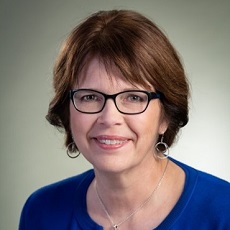
Karen Johnson
Senior Director, Change in Mind Institute
Social Current
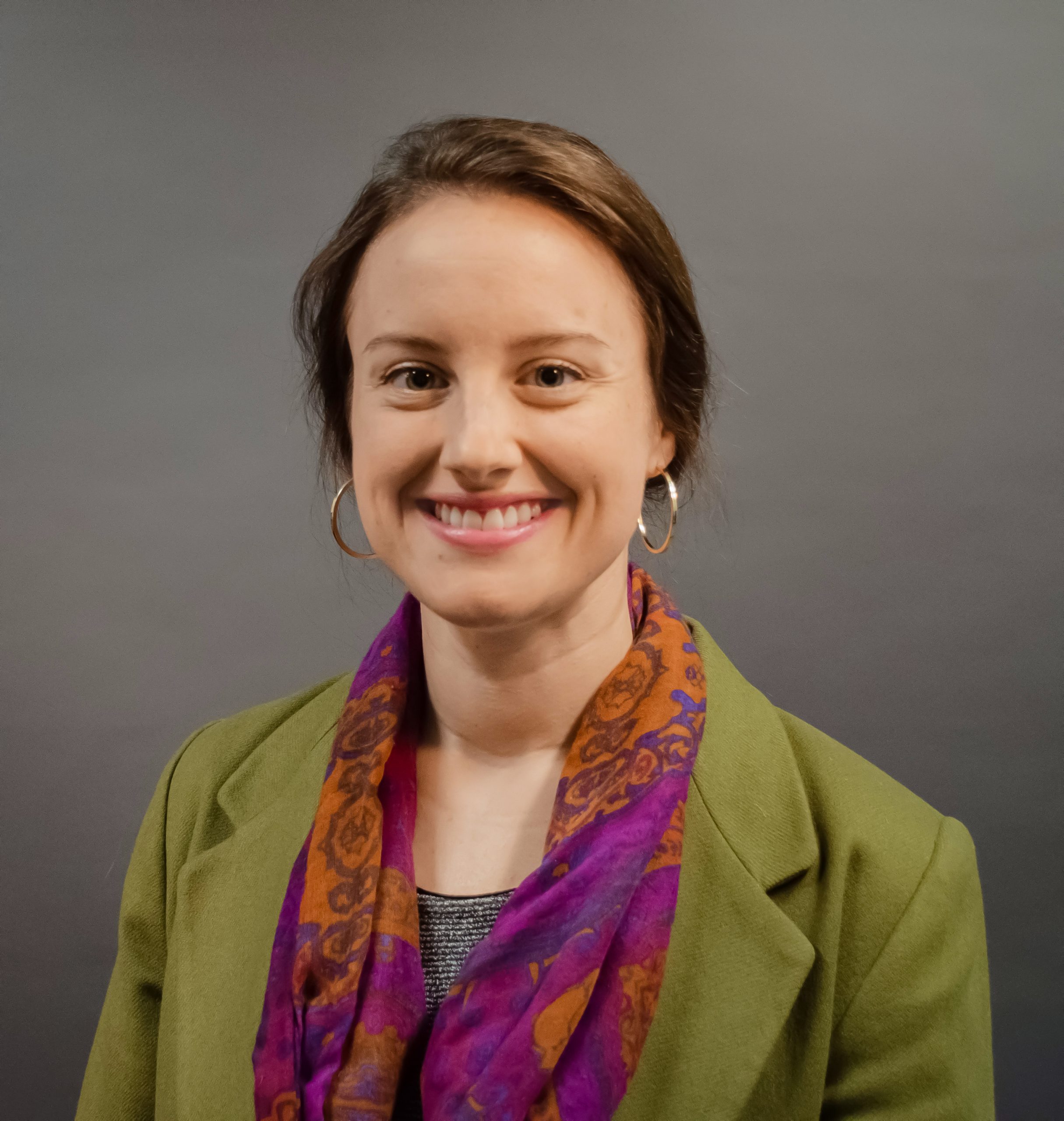
Kelly Martin
Director, Practice Excellence
Social Current
Related Events
Last week, the Indian Child Welfare Act, a guiding light of child welfare policy for over 40 years, survived a legal challenge that was brought before the Supreme Court, earning the applause of Native American tribes and child well-being advocates across the country. The Supreme Court voted 7-2 to uphold the law, which was passed in 1978 in response to investigations that found over one-third of Native children had been taken from their homes and placed with non-Native families. The law required officials to strive to place Native children with extended family, other members of the tribe, or another tribe, before considering placement in non-Native homes or institutions. The law defends long-held convictions backed up by mountains of empirical evidence that family preservation, community connection, and cultural affinity are cornerstones of child well-being.
Social Current President and CEO Jody Levison-Johnson released the following statement on the Supreme Court’s Decision:
“The Indian Child Welfare Act is consistent with best practice and child welfare’s shift towards strengthening families and promoting family preservation,” said Social Current President & CEO Jody Levison-Johnson. “By prioritizing the placement of children within their families, communities or tribal nations, we also prioritize stability and the opportunity to maintain continuity in schools, healthcare, and community participation. Today’s Supreme Court decision affirms this and ensures that we carry forward the practices and policies that we know create better outcomes for children.”
New Opioid Settlement Toolkit for Community-Based Organizations
Social Current is pleased to announce the release of the updated Opioid Settlement Toolkit for Community-Based Organizations. This toolkit offers strategy, resources, and advice to effectively advocate for over $50 billion in funds that have become available through settlements with opioid pharmaceutical companies, manufacturers, and retailers. States are currently deciding how these dollars are spent, so it is critical community-based organizations understand how the process works and use their expertise to influence policy makers.
Hearing on Anti-Poverty Tax Provisions
Last Wednesday, the Senate Committee on Finance held a hearing called “Anti-Poverty and Family Support Provisions in the Tax Code.” In his opening remarks, Chairman Ron Wyden (D-Ore.) called for the restoration of the one-year Child Tax Credit (CTC) expansion from the 2021 American Rescue Plan, which increased the credit and made it fully refundable, allowing the lowest income Americans to receive the full amount. A study by Columbia University claims that the CTC expansion lifted 3.7 million children out of poverty. In his opening remarks, Ranking Member Crapo (R-Idaho) argued against the CTC because it also benefited parents who did not work, undermining the lessons of welfare reform in the 1990s, which encouraged work, self-sufficiency, and workforce training.
The first witness, Amy Matsui of the National Women’s Law Center, spoke to the positive impact of refundable tax credits on low-income households. She said during the pandemic the enhanced Child Tax Credit, the Earned Income Tax Credit and the Child and Dependent Care Tax Credit together lifted 9.7 million people out of poverty, including 2.9 million women and 4.9 million children. Matsui was followed by Melissa Lester, a mother of two from Ohio, who told her story of struggling to pay for ever-increasing expenses, including child care, which costs more than her mortgage. She testified the $300 per month, per child from the enhanced Child Tax Credit gave her more breathing room and urged the committee to pass such family-friendly policies.
Another witness, Grant Collins of Fedcap, Inc., a nonprofit organization that helps individuals attain economic well-being, discussed the Earned Income Tax Credit saying it provides various positives for the children of beneficiaries, including improved birth outcomes, higher likelihood of college enrollment, and increased food security. The final witness, Bruce Meyer of the Harris School of Public Policy at the University of Chicago, urged against restoring the enhanced Child Tax Credit from the American Rescue Plan, because it did not tie benefits to work.
Freedom Caucus Cedes Blockade
The House floor is once again functioning, following negotiations between Speaker of the House Kevin McCarthy (R-Calif.) and the conservative Freedom Caucus.
Last week, a small group of Republicans joined Democrats in voting to prevent debate on a set of bills relating to gas stove regulation. Despite the issue’s popularity among Republicans, members of the Freedom Caucus “blindsided” Speaker McCarthy and paralyzed the House floor, preventing other popular party bills from passing as well. It appears that this rebellion was done in protest against the recent debt ceiling deal negotiated by President Biden and Speaker McCarthy, which some members feel violated the private deal made in January ensuring McCarthy’s election as speaker and did not go far enough to cut spending. Others say that the rebellion is not related to the January deals, and instead is a protest against threats made by House leadership to ensure that the debt ceiling bill would pass. On Monday afternoon, an agreement was reached and the blockade was ended after days of negotiations, with conservatives agreeing to help advance bills limiting gas stove and pistol brace regulations, two priorities of the Republican party.
However, the nearly week-long obstruction has made clear the power the Freedom Caucus holds in the House, which Republicans hold by a narrow majority. This power seems to be growing, as two new members were added to the Freedom Caucus just last week. While the standoff is over for now, the group made no promises for the future. In fact, Rep. Matt Gaetz (R-Fl.) seemed to state the group is willing to block House bills again, saying “perhaps we’ll be back here next week.”
Hearing on Postsecondary Innovation
On Wednesday, June 14, the House Subcommittee on Higher Education and Workforce Development held a hearing entitled “Postsecondary Innovation: Preparing Today’s Students for Tomorrow’s Opportunities.” Witnesses presented innovations in the higher education field that could advance equity, accessibility, and quality in postsecondary education, although some warned that funding innovative strategies without guardrails could lead to resources being wasted on low-quality programs.
Key Hearing Takeaways
- A four-year degree can provide social mobility, but postsecondary education is unaffordable and inaccessible for many Americans
- Georgia State’s National Institute for Student Success provides a model for using technology to ensure student success
- The Student Freedom Initiative uses private sector resources to help students at Minority Serving Institutions
- Changes in requirements, such as the four-year 120-credit-hour system, could reduce the financial burden of higher education while still ensuring students are prepared for the workforce
- Experts recommend that guardrails are put in place as so that innovation in education does not lead to the funding of low-quality degrees and certifications
Subcommittee Chairman Burgess Owens (R-Utah) opened the hearing by highlighting the importance of America’s colleges and universities and addressing the poor graduation rates these schools currently face. Owens contends one of the reasons higher education is “unaffordable, inflexible, and outdated” is the Higher Education Act (HEA), which provides a legislative framework for higher education and has not been fully updated since 2008. He argues the HEA needs to be revisited to reflect the modern university experience, in which over 30 percent of students are non-traditional. Owens references innovations such as competency-based education, three-year degree programs, and online education, which can advance education but are constrained by the HEA.
Ranking Member Frederica Wilson emphasized the importance of equality, and the opportunities higher education provides in her opening statement. Wilson argues although higher education can be the key to the American dream and lead to significantly higher income, students and families are being forced to shoulder more of the costs, a problem that particularly burdens black college students. In emphasizing the importance of affordable college and wraparound student services, she praises some innovations in higher education while warning against sacrificing equal access and opportunity.
The first witness, Dr. Tim Renick, executive director for Georgia State’s National Institute for Student Success (NISS), discussed the success of Georgia State, particularly in implementing technology to provide personalized attention to students. As one of the largest Minority Serving Institutions in the country, Georgia State has used predictive analytics and AI to monitor students for risk factors and proactively provide support to those at risk of dropping out, leading to a massive increase in graduation rates, especially for minority students. Renick explained how this technology, along with working with community colleges, has helped Georgia State rank among top institutions for social mobility, and how NISS has helped other organizations to do the same.
Keith Shoates, chief operating officer for the Student Freedom Initiative (SFI), after giving a shout-out to company donors, explained the pillars of SFI: alternatives to Parent PLUS loans, internships and certifications, comprehensive supports, and Minority Serving Institution (MSI) capacity building. Shoates states the overarching purpose of SFI is to attract private sector resources and create partnerships to alleviate the wealth gap in America through education. SFI is partnered with 56 institutions across 20 states with plans to expand. As an alternative to Parent PLUS loans, SFI provides Juniors and Seniors in STEM majors at participating organizations flexible loans with low interest rates, assists with obtaining certifications and paid internships, provides microgrants to students facing unexpected circumstances, and provides support for participating MSIs. Shoates contended that SFI’s model should be considered as an “effective, scalable, long-term solution to addressing the wealth gap through the lens of education.”
Lanae Erickson, senior vice president for social policy, education and politics at Third Way, a national policy think tank, explained the importance of improving the quality of education, not just access. After praising the increased access of higher education and the financial benefits it provides, Erickson pointed out the low graduation rates and lack of success some graduates face. She warned against innovative or experimental programs not backed by evidence, including expanding Pell Grants to short-term programs and funding online education. While these programs can be beneficial, Erickson recommends guardrails and transparency requirements that will ensure a high payout on taxpayer money invested in education.
Dr. Lori Carrell, chancellor of University of Minnesota Rochester and co-director of the College-in-3 Initiative, explained the work done through the College-in-3 experiment. Twelve campuses have experimented with pilot programs for the College-in-3 project and have found not only do these programs decrease financial burdens, but they can also be successful with evidence-based learning design and partnerships with employers. The group recommends the Department of Education initiates “Experimental Sites” for the project and that Congress supports the initiative through the fiscal year 2024 appropriations process as well as through HEA reauthorization by ensuring financial aid flexibility for accelerated learning pathways.
Following their statements, witnesses fielded questions regarding details of their programs and recommendations to Congress. Dr. Renick expanded on Georgia State’s use of technology to identify and assist struggling students, the importance of partnering with local community colleges, and areas in which other institutions would benefit from similar models. Mr. Shoates provided details on SFI programs, including which schools are currently sponsored and how microgrant and loan programs work. Dr. Carrell detailed the ways in which universities can retain quality degree programs while limiting the time it takes to complete them as well as the financial benefits doing so would provide. Ms. Erickson made recommendations for expanding dual enrollment, increasing equity in the K-12 system, and the importance of guardrails when implementing competency-based education programs.
Artificial Intelligence was a frequent topic of discussion, with questions about future degrees in AI and even how to prevent students from using ChatGPT to cheat. The hearing brought to light a seemingly bipartisan support for programs such as dual-enrollment and three-year degree programs that could advance both accessibility and quality of education in postsecondary schools.
HHS Secretary Goes before House Committee
On June 13, the House Committee on Education and the Workforce, chaired by Virginia Foxx (R-N.C.), hosted a hearing called “Examining the Policies and Priorities of the Department of Health and Human Services.” Secretary Xavier Becerra of Department of Health and Human Services (HHS) opened by stating the department’s commitment to keeping healthcare affordable and providing mental healthcare on par with physical healthcare to all Americans, especially minors.
Key Hearing Takeaways
- Secretary Xavier Becerra from HHS the emphasized their commitment to affordable healthcare and mental health services.
- A large portion of the meeting focused on the safety of migrant children. Secretary Becerra assured the committee that HHS is doing everything possible to keep migrant children out of exploitative situations, specifically by partnering with the Department of Labor.
- Serval members questioned Secretary Becerra about the safety of gender-affirming care for minors. Secretary Becerra responded all FDA-approved drugs are safe and effective, and each American’s healthcare journey is a conversation for the individual and a healthcare professional.
- Secretary Becerra shared the Biden administration’s interest in expanding childcare by raising the salaries of childcare workers as well as a commitment to lowering maternal death rates.
A significant focus of the meeting revolved around the New York Times article, “Alone and Exploited, Migrant Children Work Brutal Jobs Across the U.S.” Committee members questioned Secretary Becerra on how HHS keeps migrant children safe and out of exploitative situations, such as human trafficking. Secretary Xavier Becerra assured the committee the department is doing everything possible to protect migrant children in their care. HHS places migrant children with vetted sponsors, typically the child’s family or close relatives, but once they are placed with a guardian, HHS does not have jurisdiction to oversee those sponsors. HHS tries to contact children placed with sponsors to ensure their safety, but it does not have the authority to make the sponsors, or the children, respond. In the future, HHS plans to work with the Department of Labor to ensure safe workplaces in compliance with child labor laws.
Gender Affirming Care Upheld by Federal Judge
A U.S. District Judge in Florida has upheld the right of three minors to continue receiving gender-affirming care, despite recently passed legislation barring most transgender children from such care, like puberty blockers and hormone therapy. Judge Robert Hinkle also blasted the reasoning behind Florida’s ban on gender-affirming care for trans minors as likely unconstitutional. Judge Hinkle’s preliminary injunction only applies to the three families that brought the lawsuit. These families attest the ban violated their constitutional right for parents to make health-conscious decisions for their children. Hinkle states the plaintiff’s children will suffer irreparable harm if denied treatment. The ruling brings a temporary sense of relief to patients and families who have been denied access to gender-affirming care, but the legal path forward remains uncertain.
Judge Hinkle’s order comes in contrast to the series of anti-trans laws passed in Florida restricting transgender people’s access to medical care, school sports, and the ability to change names on IDs. The American Academy of Pediatrics and the American Medical Association support gender-affirming care for adults and adolescents.
Subscribe to the Policy and Advocacy Radar to receive our biweekly policy roundup, which includes commentary on issues in Social Current’s federal policy agenda, opportunities to take action, and curated news and opportunities.
The COVID-19 pandemic has undoubtedly changed the eating habits of many families. It’s also changed how many community-based organizations are helping residents with food access and education in healthy eating.
Over the last year, Episcopal Community Services in Philadelphia has pivoted its health and wellness programming to a virtual model.
As video conferencing and virtual activities have become the norm over the last year, community-based organizations are maximizing the opportunities to help families build their knowledge and skills around healthy eating. In its move to virtual programming, Episcopal Community Services is creating a customized, nutrition-focused version of the Food Network with cooking demos, salad competition, and more.
Healthy For Life® , an online portal from the American Heart Association, developed in partnership with Aramark, makes it easy for community-based organizations to offer health and wellness programming. This full suite of resources, including a complete curriculum, facilitator guides, videos, icebreakers, and more, comes ready to share.
Q&A with Episcopal Community Services
We connected with Pamela Egleston, Director of Health and Wellness Programming at Episcopal Community Services, to learn more about how they’ve adapted over the last year and their program’s successes.
What is your community’s favorite Healthy for Life Educational Experience and/or recipe and why?
The introductory session, “Feed Your Potential ” is usually a fan favorite. Participants are pleasantly surprised at the recommended servings per day of fruits and vegetables to have a healthy diet. The apple nachos recipe is the recipe most remember and say they will definitely try at home with their family. Senior club members often comment that they will use this recipe for a healthy snack. You can’t go wrong with staples like apples and peanut butter.
What is something you have done over the last year to ensure your community members have access to fresh food/groceries?
After hearing from others in the Healthy For Life Group calls regarding the success they have had incorporating Healthy For Life educational experiences with Food Pantry participants, Episcopal Community Services is looking to expand our food pantry to an open market/food choice model. We are excited to offer and include the educational component to this service. Our target to begin is this spring and it may be a hybrid experience with the pantry pick-up in-person and the educational experience virtual pending safety guidelines around social distancing and number of participants who can gather in a designated indoor space.
What is one thing you have learned regarding offering virtual programming to the community?
The virtual experience offers convenience and potentially could reach a broader audience as the participant would not have to leave their home. Although we tried encouraging participants to prepare the recipe along with the facilitator by sending the recipe in advance, it did not work out that way. Nevertheless, our facilitator is very engaging and makes the educational piece of the experience interactive with pop quizzes in the chat etc. The last half can be liken to a cooking show on TV. The participants watch as the facilitator demonstrates how to prepare the recipe. There is always banter back and forth as participants muse if only they could smell and taste the recipe. So what we have learned is that if the facilitator is engaging the program works.
If you could do it all over again, what’s one thing you would do differently when implementing a virtual/remote program?
I would find a practical way to get the ingredients for the recipes to participants in advance so that they can prepare it, if not during the session, afterward to share with their families. We did build in credits for attending each session in the form of grocery store gift cards as an incentive. We are planning a “Salad Competition ” at the end the series with prizes like an air fryer, blender or slow cooker. Another lesson learned is to give participants choice around prizes as some established household may have some of those essential items.Do you think you will continue with any of the changes you made once people are able to gather again and why?
We will continue to have the “competitions”. It is a fun way to engage participants and let them show off their culinary skills. Who doesn’t like winning a prize? We are definitely looking forward to engaging new participants from our newly expanded food pantry.
Access Healthy for Life Resources
Visit Healthy for Life® portal to get started. Complete the facilitator orientation, access the welcome toolkit and curriculum, and join the online community.
Looking for guidance on how to start a Healthy for Life program in your community? Register now for the webinar Healthy for Life – Steps for Success , to be held June 17 at 1 p.m. CT. It will provide information on your role as facilitator and resources available.
March 3, 2022 @ 3:00 pm – 4:00 pm
While equity will be included throughout our entire policy agenda, we want to be intentional about addressing the root cause issues that lead to inequities in the U.S. During this focus group, we’ll talk about how to achieve equity through better access, power sharing, resources, and data.
About the 2022-2024 Policy Agenda Setting Process and Focus Groups
Social Current is currently leading a highly inclusive and collaborative process to engage its network in developing its federal policy agenda for 2022-2024. The agenda-setting process will determine the federal policies and issues of focus for our network’s collective policy and advocacy work. Our coordinated and connected efforts will provide the Social Current network with the support and influence needed to engage their boards, staff, and communities in achieving federal policy change.
This series of focus groups, held in February and March, will capture critical feedback from the Social Current network on policy issue areas. All Social Current network organizations, including those that have purchased engagement packages or are pursuing or have achieved COA Accreditation, are strongly encouraged to participate relevant focus groups. We welcome the input of leaders at all levels.
The series of policy agenda-setting focus groups includes:
- Social Sector Health & Excellence: Feb. 16 from 3-4 p.m. ET
- Social Determinants of Health & Health Equity: Feb. 17 from 2-3 p.m. ET
- Child & Family Well-Being: Feb. 22 from 2-3 p.m. ET
- Economic Mobility: Feb. 23 from 4-5 p.m. ET
- Education: Feb. 24 from 3-4 p.m. ET
- Advancing Equity: March 3 from 3-4 p.m. ET
Who Should Participate
- Leaders of all levels within the Social Current Network
Facilitators
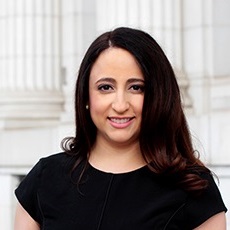
Ilana Levinson
Senior Director of Government Relations
Social Current
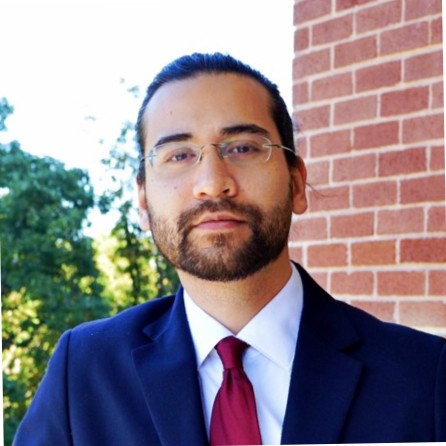
Derry Kiernan
Field Mobilization and Policy Manager
Social Current
Related Events
November 1, 2021 – November 6, 2021
In Chicago
Register on or before Sept. 17 to receive the early bird rate. The deadline to register is Oct. 17.
Social Current Network Organizations
Early Bird Registration: $3850
Regular Registration $4350
All Other Organizations
Early Bird Registration: $4850
Regular Registration: $5350
The Executive Leadership Institute (ELI), offered in partnership with Loyola University Chicago’s Quinlan School of Business, equips senior-level managers and executives with the knowledge and skills to oversee day-to-day operations, and prepare for the future and greater systems change. Transactional meets transformational for this influential experience. ELI assembles a wide variety of faculty from the nonprofit and for-profit sectors, as well as academia. The Social Current’s partnership with Quinlan means access to first-class faculty and specialized expertise, as well as the flexibility to create a program to transform students’ leadership skills. The curriculum will not only challenge, but offers a rare opportunity to focus on excellence, impact, and systems change.
ELI features 70 hours of content delivered over two concentrated sessions in consecutive years. The second half of the program culminates in the presentation of projects completed between the first and second sessions. The presentations are given before the assembly of participants and faculty. View an overview of the schedule.
Who Should Attend
- Executives
- Managers
- Directors
Location & Lodging
We look forward to holding the 2021 Executive Leadership Institute in person at the University of Loyola Chicago. Upon request, accommodations can be made for students to participate virtually.
Location
Loyola University Chicago
820 N. Michigan Ave.
Chicago, IL
Lodging
Loyola offers discounts for several hotels. Note, the Executive Leadership Institute will take place on the Water Tower Campus.
Cancellation Policy
All cancellation requests must be made in writing and are subject to a $500 processing fee. Cancellations received after Oct. 27 will not be refunded. Credit toward future events is not currently possible. Notice of written cancellation must be emailed directly to the Meetings Department.
Direct questions to the Meetings Department.
Monday, Nov. 1
Noon-1 p.m. CT
Available for Remote Participants
- Orientation
- Investing in yourself and mission
- Commitments of High-Impact Nonprofit Organizations Overview
1-2 p.m. CT
Available for Remote Participants
- Virtual welcome from Jody Levison-Johnson, CEO of Social Current
2-4 p.m. CT
Available for Remote Participants
- DISC Style
- What is your executive presence?
- Carol Fitzgibbons from Loyola
- Meet with cohort and debrief on the DISC style
Evening
- Networking dinner featuring roundtables focused on second-year students’ presentations
- Chicago Themed Dinner – Location TBD
Tuesday, Nov. 2
8:30-10 a.m. CT
Available for Remote Participants
- Driving Mission, Vision, Strategy, and Measurement across the Enterprise
10-11:15 a.m. CT
Available for Remote Participants
- Panel Discussion – Managing for Mission from the C Suite
11:15 a.m.-Noon CT
Available for Remote Participants
- Group activity/discussion on executive leadership
Noon-1 p.m. CT
- Lunch provided
1:30-3 p.m. CT
- Company visit off-campus – Cara Collective (transportation provided)
3-4 p.m. CT
Available for Remote Participants
- Debrief about company visit at Loyola
4-5 p.m. CT
Available for Remote Participants
- Group activity/discussion on Mission/Vision/Strategy
Evening
- Dinner on your own
Wednesday, Nov. 3
8-10 a.m. CT
Available for Remote Participants
- Finding Your Funding Model
10-11:15 a.m. CT
Available for Remote Participants
- Panel Discussion: Fundraising for Good
11 a.m.-Noon CT
Available for Remote Participants
- Group activity/discussion around funding
Noon-1 p.m. CT
Available for Remote Participants
- Lunch provided at Loyola
- Virtual Lunch with ELI Alumni Board and Mentors
1-4 p.m. CT
Available for Remote Participants
- Equity, Diversity, and Inclusion
Evening
- Dinner off campus – Location TBD
Thursday, Nov. 4
8:30-10:15 a.m. CT
Available for Remote Participants
- Panel: Building High-Performing Board, Staff, and Volunteer Teams
10:30 a.m.-Noon CT
Available for Remote Participants
- Empowering Your Team through Strengths-based Approaches
- Dr. Philip Hong, Loyola University
Noon-1 p.m. CT
- Lunch provided by Loyola
Afternoon
- Company visit off campus – Gary Comer Youth Campus
- Transportation provided
Evening
- Dinner on your own
Friday, Nov. 5
8:30-10 a.m. CT
Available for Remote Participants
- Overview of projects
- Initial peer conversation within the cohort on proposed projects
10 a.m.-Noon CT
Available for Remote Participants
- Project presentations
- Debrief in context of year one projects: Lessons learned, advice
Noon-1 p.m. CT
- Graduation and certificate award ceremony


